The Horror of Fantasy's Death [Perturbing the MacGuffins]
[Kapital's Desire Algorithm: It may be only a fantasy, but its our fantasy, and its the only damn fantasy we've got - so why don't you Get With The Programme and come on in for the Big Win ...]

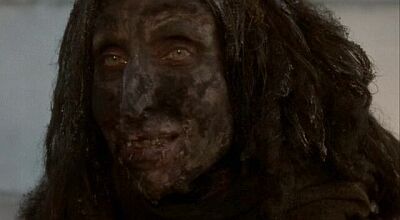
For some unimaginable though fortuitous reason it has come to pass that those film narratives which perturb the ever-present phantom that is the MacGuffin are always the most promising, a cinema that collapses the fantasmatic support for quotidian reality, with often alarming if not unusually uncanny results. Films by David Lynch (Lost Highway, Mulholland Dr.) , Stanley Kubrick (from The Killing up to The Shining and Eyes Wide Shut), John Huston (The Maltese Falcon, The Treasure of the Sierre Madre, The Dead), Alfred Hitchcock (Vertigo, North By Northwest), among many others (Cronenberg, Welles, Kieslowski, Polanski, Herzog, Wong Kar Wai, Roeg, Leconte, Godard, etc), to differing degrees and with varying effects, successfully occupy this cinematic vortex of shifting parallaxes. Enough, for the most part, to concentrate on Lynch's Mulholland Dr here, perhaps one of the more successful and challenging examples of such a film in the last decade.
Pure MacGuffins: Film narratives that leave the MacGuffin "magically" unresolved, breathlessly unexamined, that perpetuate the fantasy, are, of course, instances of sutured, seamless ideology at its purest: the precious "letters of transit" in Curtiz's Casablanca, the glowing briefcase in Pulp Fiction, much like the way, following Zizek, that the Coke brand functions "as the direct embodiment of "IT," of the pure surplus of enjoyment over standard satisfactions, of the mysterious and elusive X we are all after in our compulsive consumption of merchandise." And it is this very superfluous character "between the sublime and the trash" that makes our desire for X all the more insatiable: "So, when, some years ago, the publicity motto for Coke was "Coke, that's IT!" we should discern in it the entire ambiguity: "that's it" precisely insofar as that's NEVER effectively IT, precisely insofar as every satisfaction opens up a gap of "I want MORE!"
Towards Perturbances: here the fantasy is interrupted, dislocated, the characters are thrown into anxious confusion and de-sutured lack, leading to either (1) a failed dejection and withdrawal/melancholy (A disoriented Clay at the end of Kubrick's The Killing, witnessing in disbelief as his $2m proceeds from the race-track heist scatters to the winds; lost object of desire: Jimmy Stewart in Vertigo after his "first" Madeline falls to her death); or (2) a hysterical, giddy, nihilistic laughter - "fail again, fail better" (Walter Huston, at the end of his son John Huston's The Treasure of the Sierre Madre, upon learning that all of his precious sacks of gold, mistaken for sand by bandits, were emptied into the desert sands); or (3) a disavowing, self-denying resolve to start all over again: displacement (Sidney Greenstreet, at the conclusion of The Maltese Falcon, upon discovering that the "precious" bird was a fake, then sets off on yet another quest, while - in typical patriarchal film noir fashion - the other, femme fatale "bird" takes The Fall; Cary Grant in North by Northwest, who, after ascertaining that Kaplan, his mistaken identity, does not and never did exist, transfers/displaces all of his attention onto his object of desire/petit a, Eva Marie Saint). In all of these examples, however, the mysterious, phantasmatic X remains undeconstructed, hovering somewhere off-space, awaiting a reappearance (as subsequently occurs in the second half of Vertigo, Madeline Mark II).
The All-consuming Parallactic Perturbance: "There's no going back now" - Perversity, Psychosis, Death Drive
 Three films from the past decade brilliantly portray and confront the horror of fantasy-death, the evental perturbance, and its alternate but indeterminate consequences: Lost Highway (1998), Eyes Wide Shut (1999), and Mulholland Dr (2001) - though Cronenberg's recent The History of Violence is also admirable, if ultimately unsatisfactory compared to this unprecedented trilogy - the last of which, Mulholland Dr is considered here.
Three films from the past decade brilliantly portray and confront the horror of fantasy-death, the evental perturbance, and its alternate but indeterminate consequences: Lost Highway (1998), Eyes Wide Shut (1999), and Mulholland Dr (2001) - though Cronenberg's recent The History of Violence is also admirable, if ultimately unsatisfactory compared to this unprecedented trilogy - the last of which, Mulholland Dr is considered here.

 Like Lynch's earlier film, Lost Highway, Mulholland Dr involves characters who have two identities, identities who have two characters, and a host of elements that disrupt, rupture, or problematise the narrative's continuity. The two basic narratives (Betty's and Adam's) intersect in multiple ways that demand a reconstruction of time sequence. The two narratives are in fact the lines of "reality" and "the Real," fantastically excluded as the surplus of the scheme in order to produce a retro-Hollywood film starring the protegé of the corrupt Castigliane brothers, "Camilla Rhodes." More than any other Lynch film, Mulholland Dr requires the concept of suture, the stitching together or quilting of an exterior and interior at a point located precisely in the middle of the symbolic authoritarian Other.
Like Lynch's earlier film, Lost Highway, Mulholland Dr involves characters who have two identities, identities who have two characters, and a host of elements that disrupt, rupture, or problematise the narrative's continuity. The two basic narratives (Betty's and Adam's) intersect in multiple ways that demand a reconstruction of time sequence. The two narratives are in fact the lines of "reality" and "the Real," fantastically excluded as the surplus of the scheme in order to produce a retro-Hollywood film starring the protegé of the corrupt Castigliane brothers, "Camilla Rhodes." More than any other Lynch film, Mulholland Dr requires the concept of suture, the stitching together or quilting of an exterior and interior at a point located precisely in the middle of the symbolic authoritarian Other.
 The film's narrative opens with a limousine driving down Mulholland Dr at night, with a driver and assistant in the front seat and a brunette wearing evening clothes (Laura Elena Harring) in the back. The car makes an unscheduled stop, the driver turns around with a gun asking the passenger to get out of the car, but before the assassination can take place, a speeding car plows into the limo, killing the driver and assistant. The passenger staggers down the hillside and finds refuge in the vacated apartment of "Aunt Ruth," whose niece Betty (Naomi Watts) controls the "fantasy narrative," beginning with her arrival in Los Angeles, an ingenue seeking stardom in DreamWorld.
The film's narrative opens with a limousine driving down Mulholland Dr at night, with a driver and assistant in the front seat and a brunette wearing evening clothes (Laura Elena Harring) in the back. The car makes an unscheduled stop, the driver turns around with a gun asking the passenger to get out of the car, but before the assassination can take place, a speeding car plows into the limo, killing the driver and assistant. The passenger staggers down the hillside and finds refuge in the vacated apartment of "Aunt Ruth," whose niece Betty (Naomi Watts) controls the "fantasy narrative," beginning with her arrival in Los Angeles, an ingenue seeking stardom in DreamWorld.
Key details occur before the accident scene: collaged images of couples jitterbugging and a bed with pink-red sheets, accompanied by the sighs of a woman. The street sign, "Mulholland Dr" [a psychoanalytic pun on Dr Mulholland?] takes us to the first narrative sequence.
 Adam Kesher is a director of an upcoming retro film musical presently auditioning for the lead female role. In a meeting with the evidently corrupt Castiglione brothers (the name is spelled with two n's in the one of the credits), he is given an ultimatum ("This is the girl") to cast "Camilla Rhodes," a blond whose photo we see. Refusing, Kesher bashes the Castiglione brother's limo and drives to his modern house perched above Mulholland Dr. There he discovers his wife in bed with the pool serviceman, covers her jewelry with pink house paint, and is beaten up by the burly serviceman. Later Adam finds out that he has been frozen out of the production and, after a conversation with the enigmatic "cowboy" at a corral at night, gives in to the demands to hire the blond Camilla during the auditions the next day. Adam is the barred subject on account of his initial refusal and subsequent acquiescence.
Adam Kesher is a director of an upcoming retro film musical presently auditioning for the lead female role. In a meeting with the evidently corrupt Castiglione brothers (the name is spelled with two n's in the one of the credits), he is given an ultimatum ("This is the girl") to cast "Camilla Rhodes," a blond whose photo we see. Refusing, Kesher bashes the Castiglione brother's limo and drives to his modern house perched above Mulholland Dr. There he discovers his wife in bed with the pool serviceman, covers her jewelry with pink house paint, and is beaten up by the burly serviceman. Later Adam finds out that he has been frozen out of the production and, after a conversation with the enigmatic "cowboy" at a corral at night, gives in to the demands to hire the blond Camilla during the auditions the next day. Adam is the barred subject on account of his initial refusal and subsequent acquiescence.

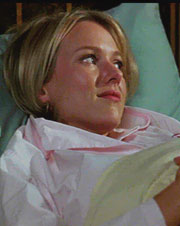 This narrative, however, generates a fantasy that is not Adam's but one generated by the phallic desiring-to-desire Betty, who appears at the LA airport in the company of an old couple [Diane/Betty's grandparents in the script of the TV pilot from which the film was adapted, who apparently abused her as a child] who give her an informal welcome to the town and drive off in their own limousine, laughing. Betty's fantasy begins when she finds Rita, a mysterious brunette in the shower of her aunt's apartment. The woman tells her of the accident and says that she cannot remember her real name. Together they pursue the question of identity, ending in the discovery of a corpse in the apartment of "Diane Selwyn," lying on a bed with pink-red sheets.
This narrative, however, generates a fantasy that is not Adam's but one generated by the phallic desiring-to-desire Betty, who appears at the LA airport in the company of an old couple [Diane/Betty's grandparents in the script of the TV pilot from which the film was adapted, who apparently abused her as a child] who give her an informal welcome to the town and drive off in their own limousine, laughing. Betty's fantasy begins when she finds Rita, a mysterious brunette in the shower of her aunt's apartment. The woman tells her of the accident and says that she cannot remember her real name. Together they pursue the question of identity, ending in the discovery of a corpse in the apartment of "Diane Selwyn," lying on a bed with pink-red sheets.
 Diane and Camilla are lovers, but Camilla breaks off the relationship. Diane is invited to an engagement party at Adam's house and driven to the same spot on Mulholland Dr, which now is revealed as a short-cut to Adam's house. Adam has by this time divorced his unfaithful wife and cast Camilla in the lead role. The original blond version of Camilla appears at the party as, we think, one of Camilla's new lovers. Betty, driven psychotic by jealousy, hires a hit man whom we have seen earlier.
Diane and Camilla are lovers, but Camilla breaks off the relationship. Diane is invited to an engagement party at Adam's house and driven to the same spot on Mulholland Dr, which now is revealed as a short-cut to Adam's house. Adam has by this time divorced his unfaithful wife and cast Camilla in the lead role. The original blond version of Camilla appears at the party as, we think, one of Camilla's new lovers. Betty, driven psychotic by jealousy, hires a hit man whom we have seen earlier.
Some scenes work as explicit sutures, in a recursive film narrative that is otherwise seemingly thoroughly de-sutured. Behind a "Twinkie's" fast-food restaurant is a wall concealing a dark-faced Mystery Tramp in the lane behind, who, in one scene, fulfills a nightmare of a "patient" who returns with his colleague/doctor to the scene of his traumatic, recurring dream. The patient dies of fright seeing the Mystery Tramp spring out from behind the wall. Later, we encounter the Mystery Tramp again in possession of the blue box, out of which run miniaturized versions of the couple [Betty/Diane's grandparents again] who accompanied Betty at the LA airport.
Objects also serve as suture devices. The hired killer tells Diane that he will send a blue key to her when he has succeeded in murdering Camilla. This key is on the coffee table in Diane's apartment when we find her alone, just before her suicide. The triangular blue key that opens the blue box is in Rita's purse at the beginning of Betty's narrative, and is the object that closes/twists the Rita/Betty narrative into the Camilla/Diane one. Lamps, phones, and Diane's bed also work as suture devices.
The Big Other of Mulholland Dr
Agents of Kapital
Mulholland Dr's Mulholland Drive is the "place" of the Big Other, the "network of symbolic relations" that establish the "reality" of the film. The fleet vehicle for this authoritarian system is the limousine, and all manipulative characters are connected with limousines. Above Mulholland Dr is Adam's modernist glass house, the scene of his confrontation with his adulterous wife and, later, his engagement party. The zone below contains Aunt Ruth's apartment, Club Silencio, and Diane's apartment, but the real zone are the purses and boxes that contain the "poché space" that provides the suture between Diane's fantasy (the "Real") and the reality of the director's dilemma and Diane's failed love affair with Camilla (the "Symbolic").
 Each retreat by Adam (forced by the Castiglione brothers to accept their actress protegée) leads to another forced escape, bringing him back into the realm of symbolic relationships and the reality principle as he acquiesces to the Castiglione brothers' demand ("This is the girl") and even falls in love with Camilla Rhodes, albeit the brunette not the blond version.
Each retreat by Adam (forced by the Castiglione brothers to accept their actress protegée) leads to another forced escape, bringing him back into the realm of symbolic relationships and the reality principle as he acquiesces to the Castiglione brothers' demand ("This is the girl") and even falls in love with Camilla Rhodes, albeit the brunette not the blond version.
Perturbance at Club Silencio
The Hell of the Real is Blue: Blue, Blue, Blue
Notice to the right hand side of the screen when Betty and Rita are outside at "2 in the morning" trying to get a taxi to the Club Silencio, there is a pole or street light with a sign that says "HELL".


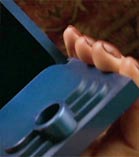
During their late-night visit [this scene is preceded by an explicit homage to Ingmar Bergman's famous shot from Persona] to the Club Silencio nightclub (another, larger Blue Box - aside: the French expression for nightclub is "Boite de Nuit" - Box of night), Betty and Rita listen to Rebekah del Rio lip-sync a song, Llorando - Roy Orbison's Crying - [The female singer is introduced as "La Llorona de Los Angeles": "La Llorona" (The Crying Lady) is a traditional Ghost of Mexico City, foreshadowing Diane] and collapse. Betty immediately discovers a blue box in her handbag that seems to be made of the same material as a blue key found in Rita's purse earlier. Now determined, disciplined, resolute, they rush back to the apartment. But Betty disappears mysteriously, and after Rita opens the box she too disappears, along with the entire narrative apparatus and scenery. Betty now appears in the guise of Diane Selwyn, in a scene in her apartment, woken first by Big Other agent, The Cowboy. Rita appears, but not in clear temporal sequence and under her real name of "Camilla Rhodes."
"Rebekah Del Rio's performance is an indication that, according to Diane, there is a large game, a large reality, and she is merely a pawn in it. Like an actor she can mouth the words - she might be able to perform them brilliantly, in fact - but they've already been written by someone else, and if she drops out, the larger story will continue."
 As K-punk brilliantly argues in This Is (Not) The Girl, The Real of Mulholland Dr is not Diane’s supposedly waking world, but the paradoxically entrancing insomniac realm of Club Silencio (which, in acting as the gateway from the first section of the film to the second is like the ‘cut’ of the moebian band that when sutured together, transforms the two sides of the piece of paper into a single strip). I say ‘paradoxically entrancing’ because the scene is ostensibly demystifying. Yet only ostensibly so; like Magritte’s ‘This Is Not a Pipe’, Club Silencio, reminiscent of the Black/White Lodge in the first and final episodes of Twin Peaks and as intensely charged as anything in Lynch’s oeuvre, demonstrates film – and art’s - irreducible sorcery. Club Silencio’s scenario is thoroughly Potteresque. The entertainment is provided by perfomers who mime onstage to a pre-recorded soundtrack, much in the way that Potter had the characters in The Singing Detective and Pennies From Heaven lip sync to thirties’ pop.
As K-punk brilliantly argues in This Is (Not) The Girl, The Real of Mulholland Dr is not Diane’s supposedly waking world, but the paradoxically entrancing insomniac realm of Club Silencio (which, in acting as the gateway from the first section of the film to the second is like the ‘cut’ of the moebian band that when sutured together, transforms the two sides of the piece of paper into a single strip). I say ‘paradoxically entrancing’ because the scene is ostensibly demystifying. Yet only ostensibly so; like Magritte’s ‘This Is Not a Pipe’, Club Silencio, reminiscent of the Black/White Lodge in the first and final episodes of Twin Peaks and as intensely charged as anything in Lynch’s oeuvre, demonstrates film – and art’s - irreducible sorcery. Club Silencio’s scenario is thoroughly Potteresque. The entertainment is provided by perfomers who mime onstage to a pre-recorded soundtrack, much in the way that Potter had the characters in The Singing Detective and Pennies From Heaven lip sync to thirties’ pop.
 Despite the complete ingenuousness of the magician-compere’s words – ‘There is no band. What you will hear are recordings.’- we (the audience) are nevertheless unable to resist the seduction of the spectacle. So when the apparent singer, Rebekah Del Rio, collapses but the music continues, we are shocked. Something in us compels us to treat the performance as if real.
Despite the complete ingenuousness of the magician-compere’s words – ‘There is no band. What you will hear are recordings.’- we (the audience) are nevertheless unable to resist the seduction of the spectacle. So when the apparent singer, Rebekah Del Rio, collapses but the music continues, we are shocked. Something in us compels us to treat the performance as if real.
This is the moment of the death of Betty/Diane's fantasmatic support of her reality, the withering away of her objet petit a, Rita/Camilla and her world of Desire, the terminal perturbance of the MacGuffin - her emergence as the machine in the ghost (the dejected Diane).

It would be difficult to conceive of a more compelling parable for postmodernism. Just as Postmodernism simultaneously exposes and disturbs generic conventions whilst also participating in their ‘lure’, so the Silencio audience is made aware of the artificiality of what they are experiencing at the very moment that they succumb to it. (See here for an analysis of this in relation to Twin Peaks and The Singing Detective.
 There is of course nothing less mendacious, less dissimmulatory, in cinema’s history of illusion than the scene in Club Silencio. What we are seeing and hearing – the film itself - is a recording and nothing but. On the most banal level, this is the Real which the ‘magic of cinema’ must conceal. Yet the scene haunts for reasons other than this. It challenges the audience (us!) to recognize that our own lives, the roles we perform when we leave the auditorium, are themselves recordings, scripted by forces outside the self whose ‘substance’ turns out to be itself nothing more than a palimpsest of influences.
There is of course nothing less mendacious, less dissimmulatory, in cinema’s history of illusion than the scene in Club Silencio. What we are seeing and hearing – the film itself - is a recording and nothing but. On the most banal level, this is the Real which the ‘magic of cinema’ must conceal. Yet the scene haunts for reasons other than this. It challenges the audience (us!) to recognize that our own lives, the roles we perform when we leave the auditorium, are themselves recordings, scripted by forces outside the self whose ‘substance’ turns out to be itself nothing more than a palimpsest of influences.

Rebekah del Rio
Lip syncing is a model for a subjectivity that is essentially empty; that is driven, not driving; that is a rendition, not an origination; whose inside, like that of the moebius band, is all outside. Watching Club Silencio I’m reminded of Philip K Dick’s gnomic but suggestive remark that ‘life is not lived, but lived through.’
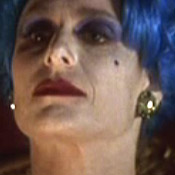 Unlike Adam and Camilla, who submit totally to the perversion ("This is the girl"), life as entirely a symbolic recording and a submission to the Big Other (and so succeed in the world of Kapital), Diane refuses, she both aggressively rejects the Symbolic and is rejected by it ("Maybe someone is missing," "The girl is missing"), which, when combined with the collapse of her fantasy world, she succumbs to psychosis.
Unlike Adam and Camilla, who submit totally to the perversion ("This is the girl"), life as entirely a symbolic recording and a submission to the Big Other (and so succeed in the world of Kapital), Diane refuses, she both aggressively rejects the Symbolic and is rejected by it ("Maybe someone is missing," "The girl is missing"), which, when combined with the collapse of her fantasy world, she succumbs to psychosis.
 In the story we are first led to believe that Rita, the amnesiac accident victim of an attempted assassination, finds Betty, a "phallic girl" who helps her seek her true identity. This structure uses the anamorphy of character, role, and appearance to establish a mystery-within-a-mystery. The blue key and box are also the suture to reconnect this fantasy with the director's "reality".
In the story we are first led to believe that Rita, the amnesiac accident victim of an attempted assassination, finds Betty, a "phallic girl" who helps her seek her true identity. This structure uses the anamorphy of character, role, and appearance to establish a mystery-within-a-mystery. The blue key and box are also the suture to reconnect this fantasy with the director's "reality".
The Horror of The Other's Desire: A Triptich
"Millions of years of evolution, right? Right? Men have to stick it in every place, but for women ... women it is just about security and commitment and whatever the fuck ... else! ... If ...You ... Men ... Only ... Knew ..."
Eyes Wide Shut: Alice
 Lost Highway
Lost Highway"You'll never have me."

Mulholland Dr: Camilla
"Diane, we have to stop this."
It's Him, Isn't IT!
Deadlocks of Desire: A Riot of Phantasmatic Doublings and Displacements
Madeline, Madeline, Madeline [Vertigo]
Dead in the Real, Dead in the Symbolic, Stone-Cold Dead as a Corpse

Psychogenic Fugue
Grimace of the Real: The Thing, the Monster from the Lane
Psychosis/symbolic death: If you come too close to the sun, you get burnt.
A Ghost, about to be burnt, awaiting the arrival of the real Real.

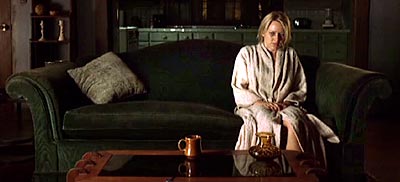
Rita/Camilla-Diane/Betty are the parallactic Jekyll-Hyde formations that sets the whole film in motion and plant the principal discontinuities that provide for our interest and curiosity. The jitterbug dance is the key anamorphic element, the grimace or stain of the Real. It's even filmed as such, with ghostly images of the elderly couple/grandparents and a blond Camilla (wearing a wig) in the "foreground" with Betty. If we take the standard, cod-Cartesian "reality principle" reading, Betty's narrative is a dream-fantasy at or just before Diane's suicide. Her depression collapses parts of the narrative and also is linked, through the cowboy, to the director's story.


 Naked and Exposed: Diane/Camilla always-already dead. No more fantasies, no more symbols, only the Horror ... - Rita! Rita! ... Camilla! Camilla,! ... Oh Come! Oh Monster from the Bottom of the Lane ... Oh Come! In and up from under the door, and up into and out from within me ... kill me.
Naked and Exposed: Diane/Camilla always-already dead. No more fantasies, no more symbols, only the Horror ... - Rita! Rita! ... Camilla! Camilla,! ... Oh Come! Oh Monster from the Bottom of the Lane ... Oh Come! In and up from under the door, and up into and out from within me ... kill me.

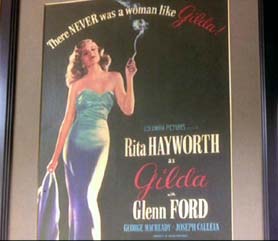
There NEVER was a woman like Rita.
“The blank space of the Thing in itself is therefore something extremely dangerous to approach- if one gets too close to it, ‘world’ itself loses its ontological consistency, like the anamorphotic stain on Holbein’s Ambassadors,: when we shift our perspective and perceive it ‘as it is’ (as a skull), all remaining reality loses its consistency ...”



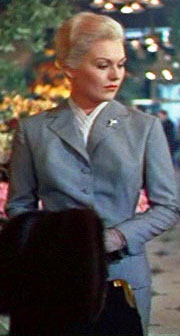
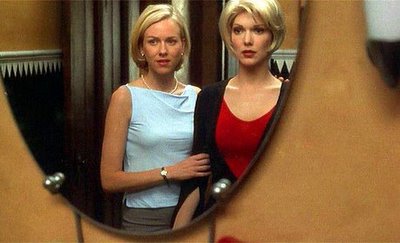

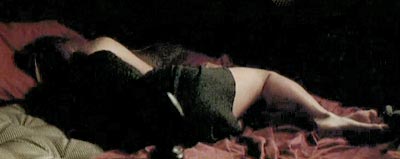
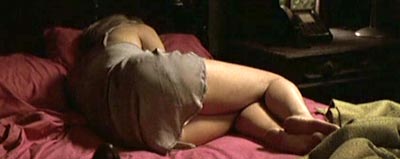
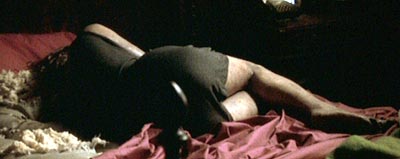


0 Comments:
Post a Comment
<< Home